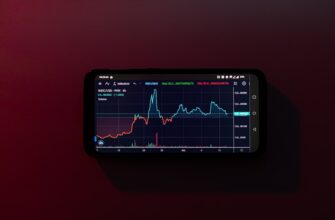- Introduction to Range Trading Cardano on Binance
- Understanding Range Trading Basics
- Why Trade Cardano (ADA) on Binance?
- Optimizing the 1-Hour Timeframe for ADA Trading
- Step-by-Step Range Trading Strategy for ADA on Binance (1-Hour)
- Essential Risk Management Techniques
- Common Mistakes to Avoid
- FAQ: Range Trading Cardano on Binance
- Conclusion
Introduction to Range Trading Cardano on Binance
Range trading Cardano (ADA) on Binance using a 1-hour timeframe offers a strategic approach to capitalize on predictable price movements within established boundaries. This method targets ADA’s frequent consolidation phases, leveraging Binance’s deep liquidity and low fees. Perfect for day traders, this guide delivers a step-by-step strategy to identify, enter, and exit trades efficiently—complete with risk management protocols. Whether you’re a novice or seasoned trader, mastering this technique can yield consistent profits in sideways markets.
Understanding Range Trading Basics
Range trading involves identifying key support (price floor) and resistance (price ceiling) levels where an asset repeatedly bounces between. Unlike trend-following strategies, it thrives in sideways markets. For Cardano, which often exhibits prolonged consolidation periods, this approach minimizes exposure to volatile breakouts. Key advantages include:
- Reduced risk via clear entry/exit points
- High-probability setups during low-volatility phases
- Compatibility with automated trading tools
Why Trade Cardano (ADA) on Binance?
Binance dominates as the optimal platform for ADA range trading:
- Liquidity Depth: Tighter spreads for ADA/USDT pairs reduce slippage.
- Low Fees: 0.1% spot trading fee (lower with BNB discounts).
- Advanced Charting: Built-in TradingView tools for precise technical analysis.
- Regulatory Security: Robust infrastructure minimizes platform risk.
ADA’s moderate volatility—compared to smaller altcoins—creates cleaner ranges, while its strong community support sustains predictable trading patterns.
Optimizing the 1-Hour Timeframe for ADA Trading
The 1-hour chart strikes an ideal balance for range trading:
- Noise Reduction: Filters out minor price fluctuations seen in 5-15 minute charts.
- Timely Signals: Faster than daily charts, allowing 2-5 trades per day.
- Pattern Clarity: Clearly displays key support/resistance zones without overcrowding indicators.
Combine with volume analysis to confirm range validity—consolidation phases should show declining volume, while breakouts exhibit spikes.
Step-by-Step Range Trading Strategy for ADA on Binance (1-Hour)
Execute this systematic approach using Binance’s trading interface:
- Identify the Range: Draw horizontal lines connecting at least three price bounces at support and resistance on ADA/USDT’s 1-hour chart.
- Confirm with Indicators: Apply RSI (14-period) to spot overbought (>70) and oversold (<30) conditions. Use Bollinger Bands® to validate compression.
- Entry Rules: Buy at support when RSI ≤ 30; sell at resistance when RSI ≥ 70. Use limit orders for precision.
- Stop-Loss Placement: Set stops 1-2% below support (long) or above resistance (short) to avoid false breakouts.
- Take Profit Targets: Exit at the opposite range boundary. Aim for a 1:2 risk-reward ratio (e.g., 1% risk, 2% profit).
- Breakout Protocol: If price closes outside the range with ≥150% average volume, cancel pending orders and reevaluate.
Essential Risk Management Techniques
Protect capital with these non-negotiable rules:
- Risk ≤1% of total account per trade
- Never trade during major news events (e.g., Cardano upgrades, Binance listings)
- Use time-based exits: Close trades unfulfilled after 8-12 hours to avoid dead capital
- Track performance metrics: Win rate, profit factor, and maximum drawdown
Common Mistakes to Avoid
Steer clear of these pitfalls:
- Over-trading: Forcing setups when no clear range exists
- Ignoring volume: Entering trades without confirmation from volume spikes
- Wide stops: Setting stops beyond 2% increases risk exposure
- Revenge trading: Chasing losses after a failed breakout
FAQ: Range Trading Cardano on Binance
Q1: Can I automate this strategy?
A1: Yes! Use Binance’s API with trading bots (e.g., 3Commas) to execute range-bound orders 24/7.
Q2: How many trades can I expect daily?
A2: Typically 2-4 setups/day in active markets. Avoid trading during strong trends.
Q3: Which indicators complement this strategy best?
A3: RSI, Bollinger Bands®, and Volume Profile. Avoid lagging indicators like moving averages.
Q4: Is a PDF version of this guide available?
A4: Save this page as PDF (Ctrl+P > Save as PDF) for offline reference. Always verify strategies with demo accounts first.
Q5: What’s the minimum capital required?
A5: Start with ≥0.5 BTC worth of ADA to accommodate position sizing and fees comfortably.
Q6: How do I handle false breakouts?
A6: Wait for a closing candle outside the range + volume confirmation. Re-enter only if price reclaims the range.
Conclusion
Mastering range trading for Cardano on Binance’s 1-hour chart demands discipline but offers exceptional reward potential. By combining precise technical analysis with stringent risk controls, traders can consistently profit from ADA’s cyclical behavior. Practice this strategy on a demo account, refine your execution, and document trades to build confidence. Remember: Consistency beats impulsivity in sideways markets.








